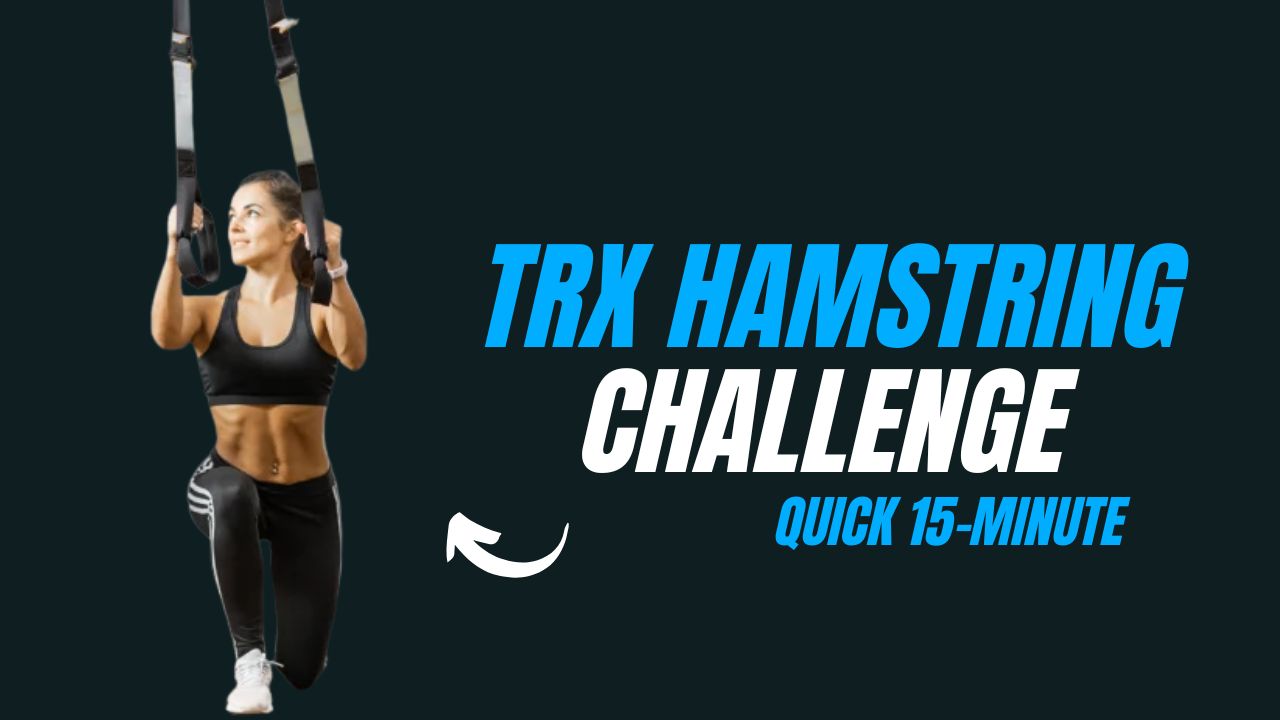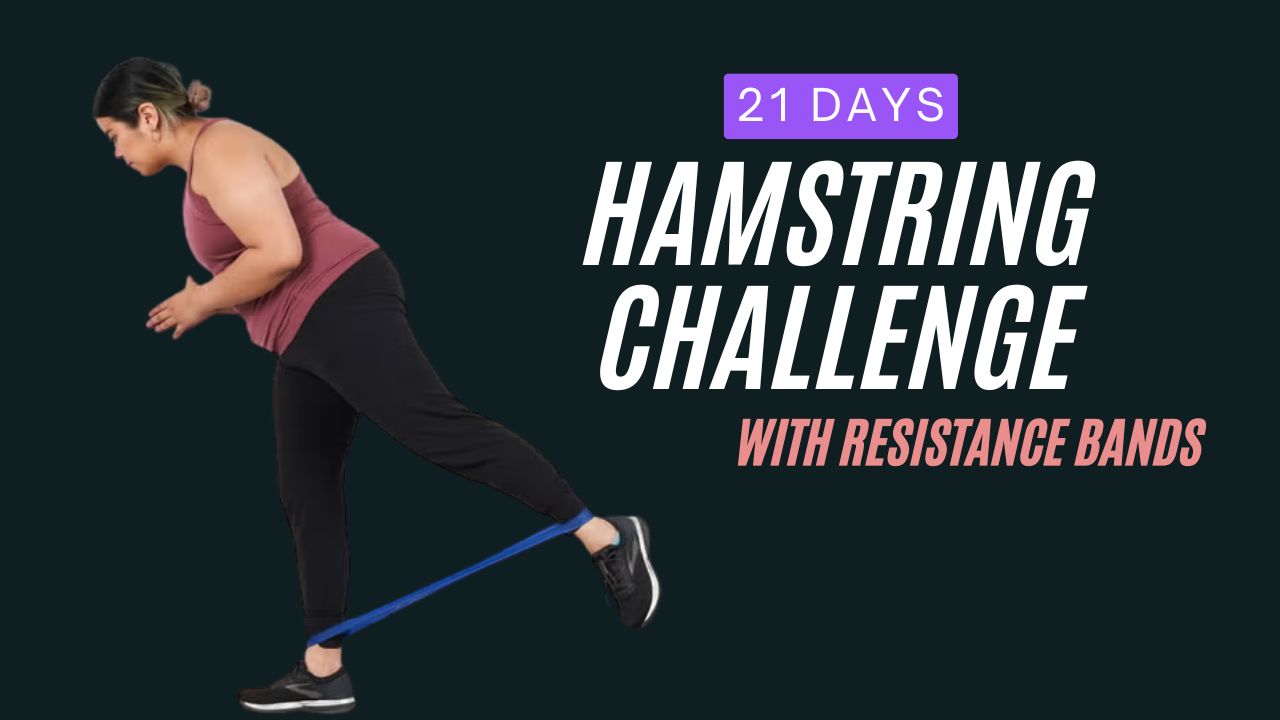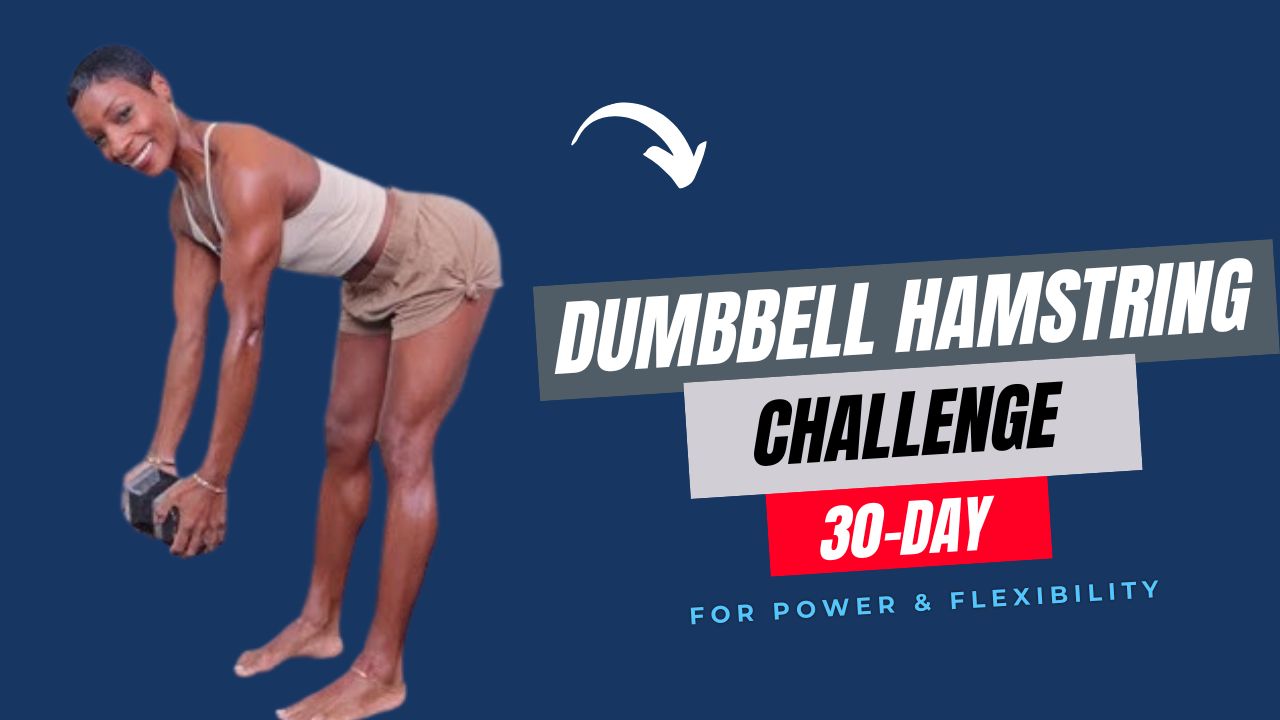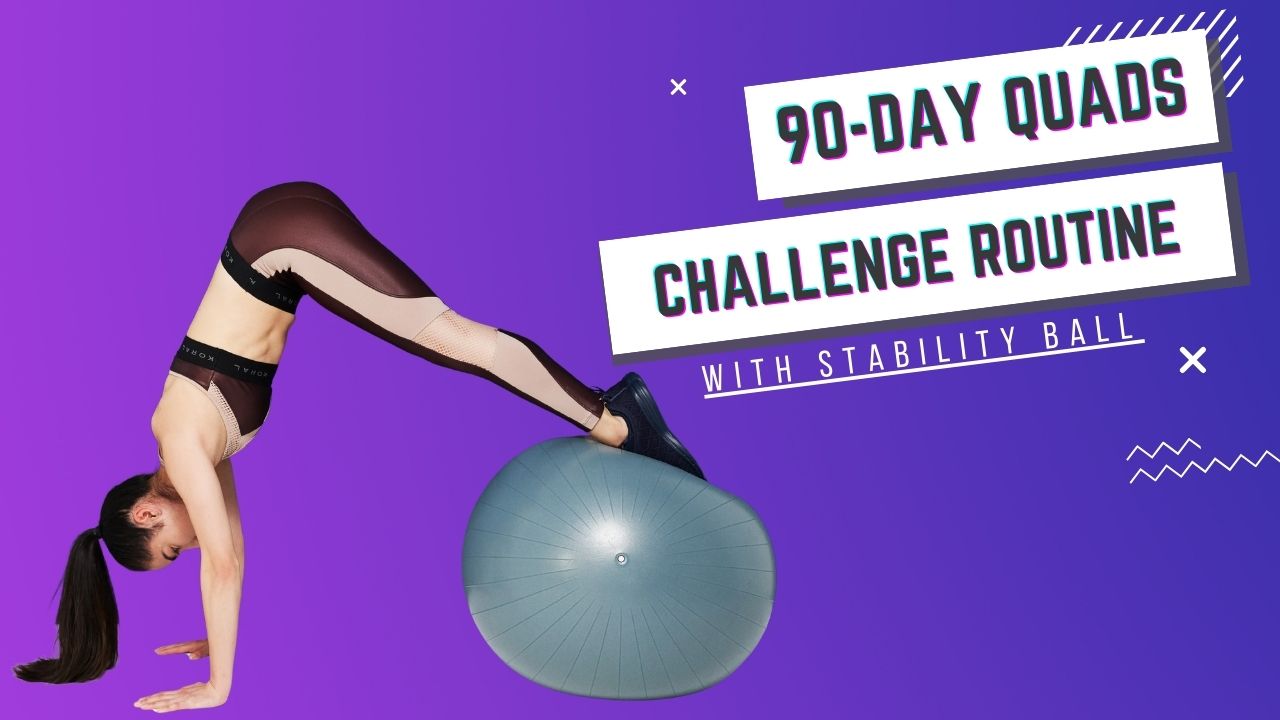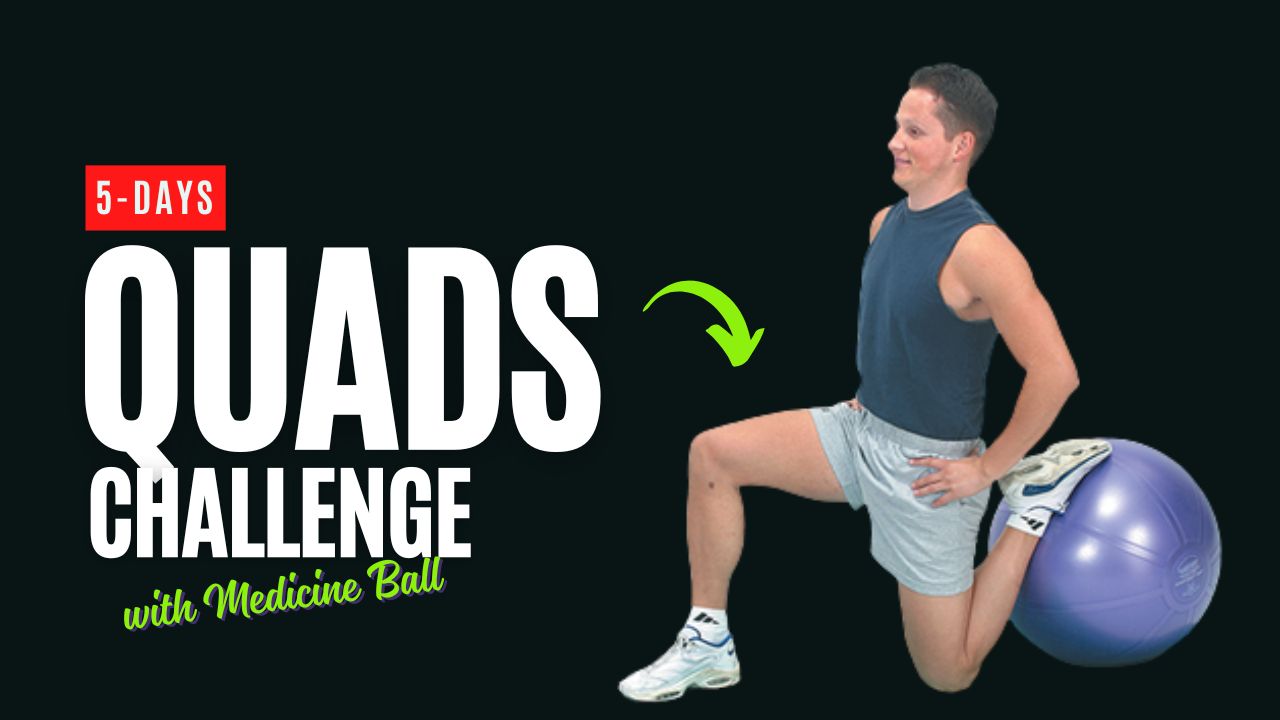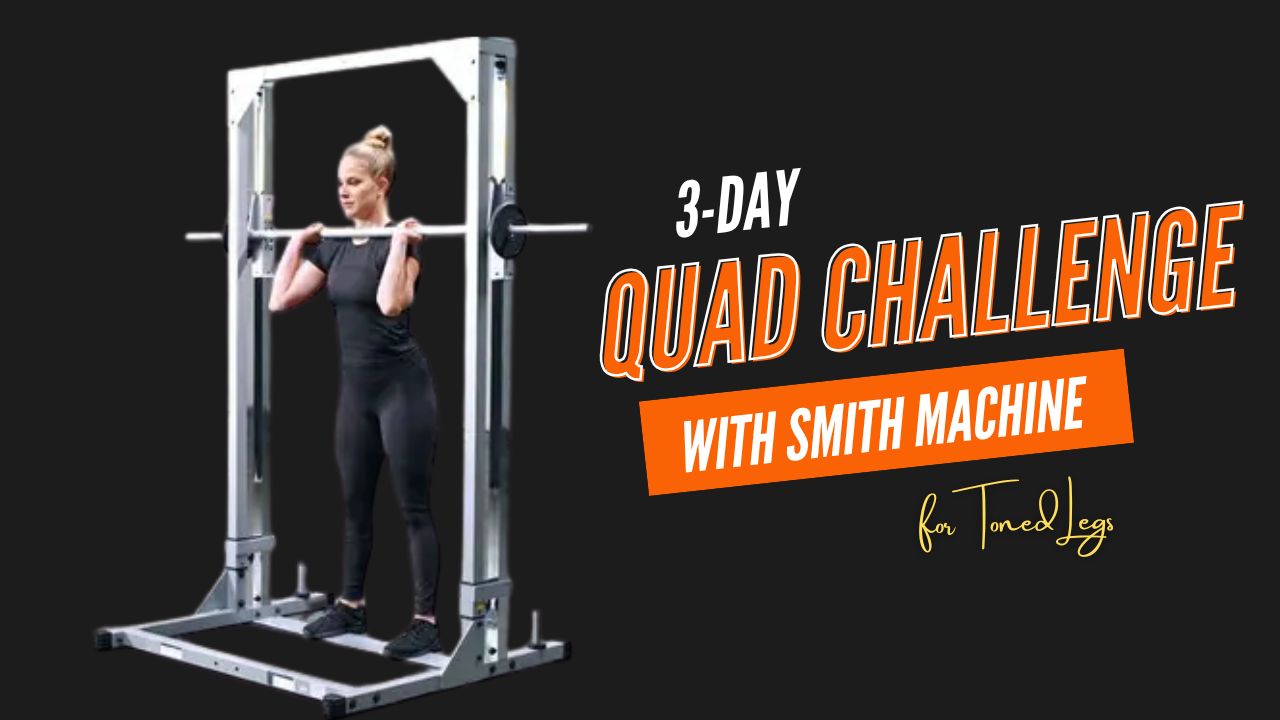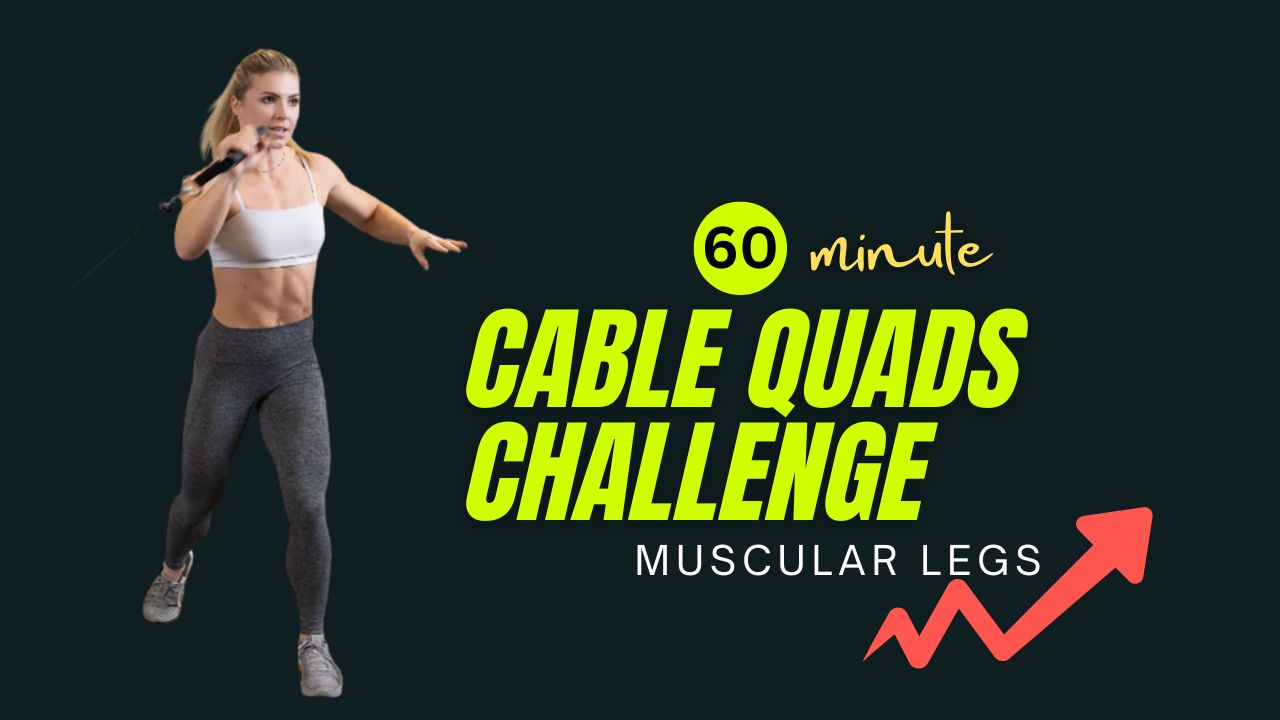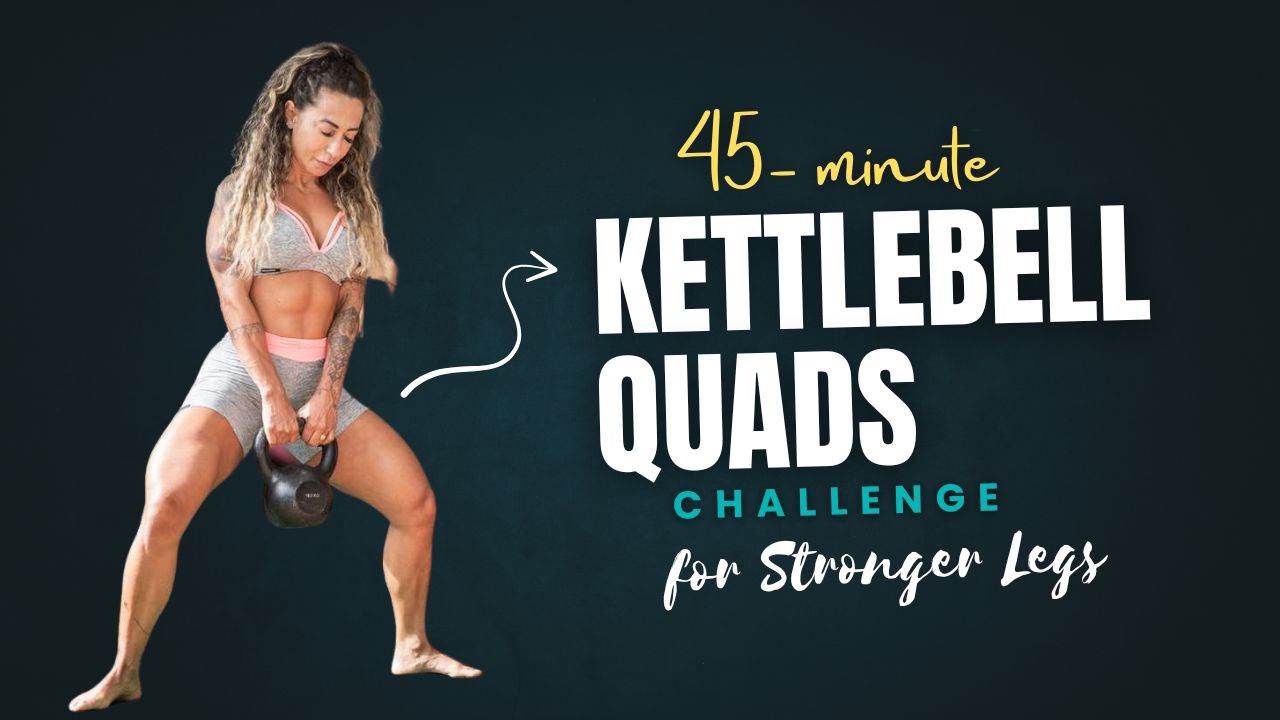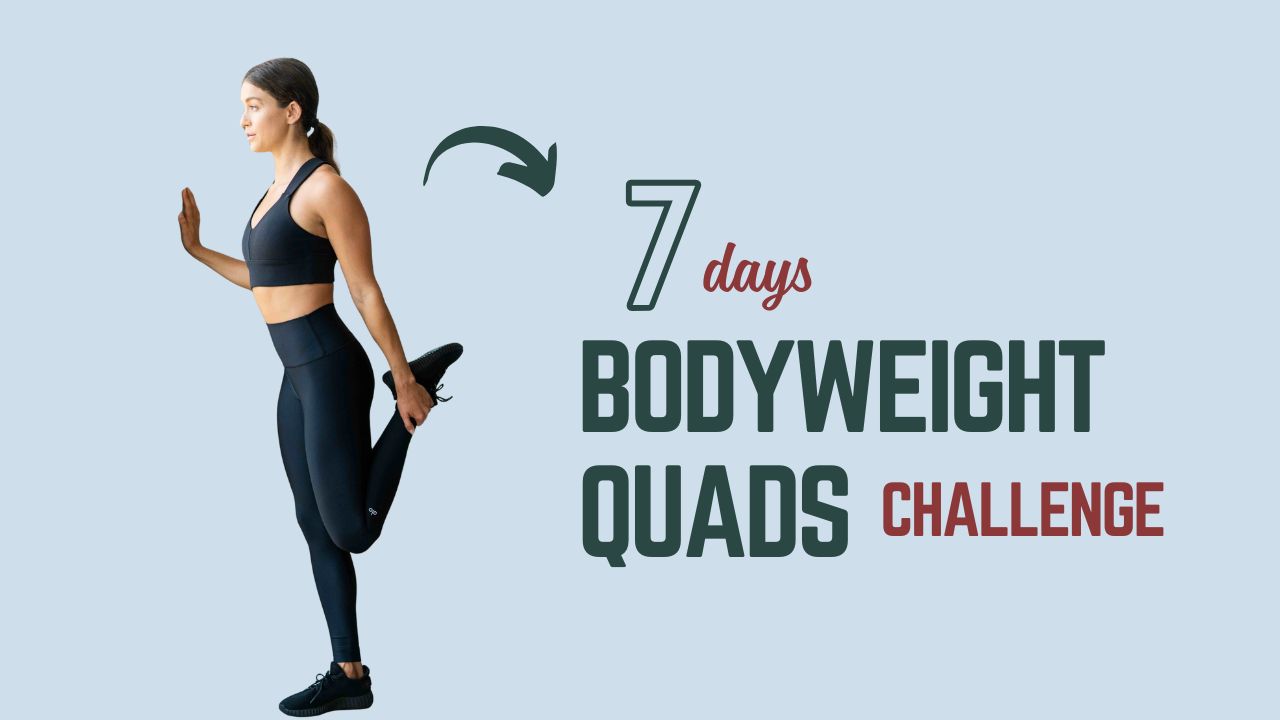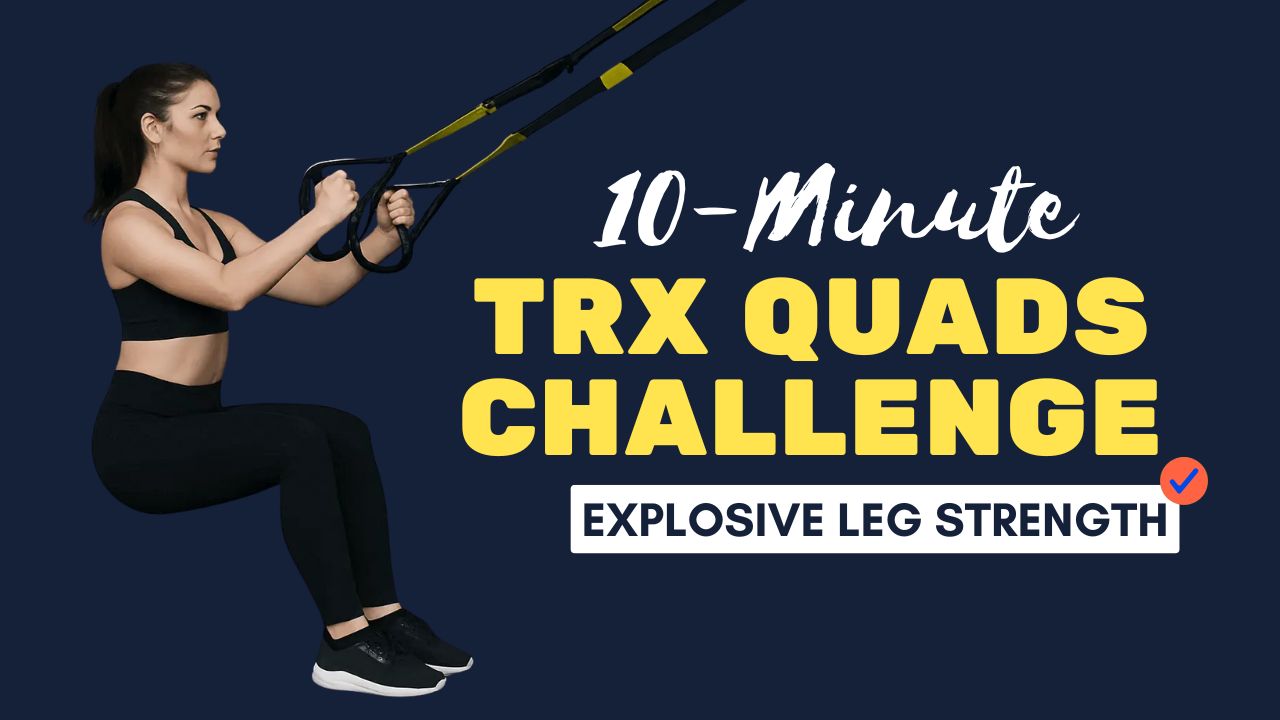Did you know that your glutes are not only the largest muscle group in your body but also one of the most powerful?
Yet, they’re often underutilized in daily activities due to too much sitting, which can lead to weaker glutes, posture issues, and even back pain.
Strengthening your glutes isn’t just about appearance—it’s about building strength, improving stability, enhancing athletic performance, and even protecting your lower back.
That’s where this 30-Day Dumbbell Booty Challenge comes in. By combining targeted dumbbell exercises with progressive training, this plan will help you lift, tone, and strengthen your glutes in just a month.
Whether you’re aiming for a more defined shape or simply want to boost your lower-body strength, this challenge is designed to push you toward results you can see and feel.
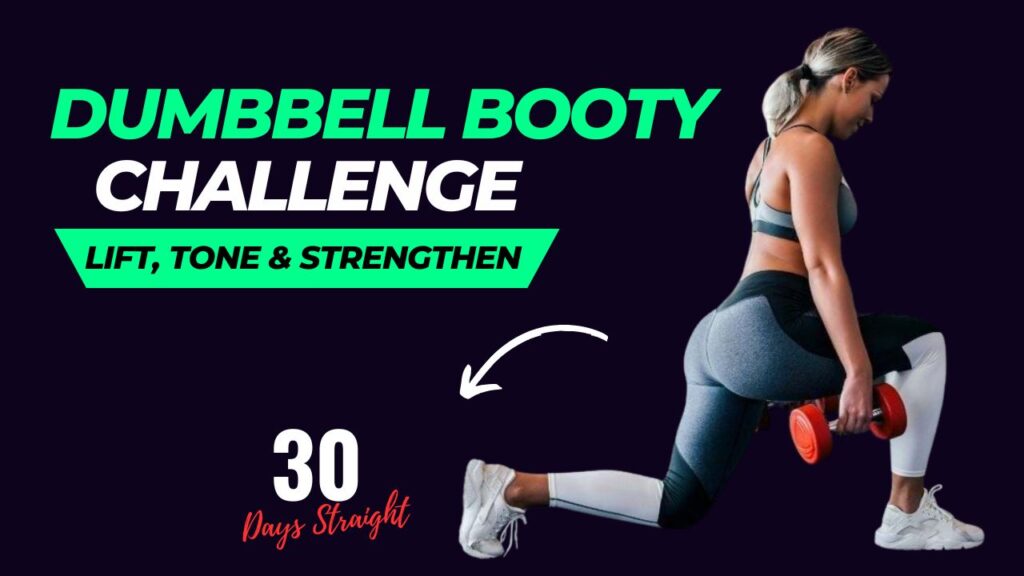
Table of Contents
Why Focus on Dumbbells for Glute Training?
Many believe that heavy gym machines are the only way to build strong glutes. That’s a myth. In fact, dumbbells are one of the most versatile and effective tools for glute training. Here’s why:
- Greater Range of Motion: Unlike machines, dumbbells allow your body to move naturally.
- Unilateral Training: They help correct imbalances between your left and right glutes.
- Core Engagement: Holding dumbbells requires stability, engaging more muscles at once.
- Accessibility: You can train at home or at the gym with just a pair of dumbbells.
What Can Happen After 30 Days of This Challenge
| Positive Outcomes | Why It Happens |
|---|---|
| Noticeable glute firmness and lift | Consistent resistance training activates and strengthens the glute muscles. |
| Improved lower-body strength | Exercises like squats, hip thrusts, and deadlifts build power in glutes, quads, and hamstrings. |
| Better posture and reduced back strain | Stronger glutes help stabilize the pelvis and support the lower back. |
| Increased stamina and endurance | Repeated sessions improve muscular endurance and overall fitness. |
| Enhanced balance and stability | Unilateral moves like Bulgarian split squats correct muscle imbalances. |
| Visible shape and tone | Dumbbell resistance sculpts muscle fibers, creating definition. |
| Boosted confidence and motivation | Achieving consistent progress inspires continued commitment to fitness. |
Do’s & Don’ts for the 30-Day Dumbbell Booty Challenge
| Do’s | Don’ts |
|---|---|
| Warm up for 5–10 minutes before each session to prepare your muscles. | Don’t skip warm-ups or stretches—it increases risk of injury. |
| Focus on proper form first, even with lighter weights. | Don’t rush through reps just to finish quickly. |
| Gradually increase dumbbell weight to challenge your glutes. | Don’t use weights that are too heavy and compromise your form. |
| Engage your core during every movement for stability. | Don’t let your knees collapse inward during squats or lunges. |
| Take rest days seriously to allow recovery and growth. | Don’t overtrain your glutes daily—they need time to build. |
| Pair your workouts with a protein-rich diet for muscle repair. | Don’t rely only on workouts—nutrition plays a big role in results. |
| Track your progress weekly to stay motivated. | Don’t compare your results with others—everyone’s body responds differently. |
8 Core Dumbbell Exercises for a Stronger Booty
Each exercise below includes a description, benefits, and a step-by-step “How To” so you know exactly what to do.
1. Dumbbell Squat
Description: Squats are a staple for glute development. Adding dumbbells increases resistance, helping you build strength and muscle faster.
How To:
- Hold a dumbbell in each hand at shoulder level or let them rest at your sides.
- Stand with feet shoulder-width apart.
- Push your hips back and bend your knees to lower into a squat.
- Keep your chest upright and core tight.
- Push through your heels to stand back up.
Tip: Avoid letting your knees collapse inward—this ensures proper glute activation.
2. Dumbbell Deadlift
Description: A powerhouse move that targets the glutes, hamstrings, and lower back. It’s essential for building strength and lifting capacity.
How To:
- Hold dumbbells in front of your thighs with palms facing your body.
- Keep a slight bend in your knees.
- Hinge at the hips and lower the dumbbells down along your legs.
- Stop when your torso is nearly parallel to the ground.
- Engage your glutes and return to standing.
Fact: Studies show deadlifts activate the gluteus maximus more than many isolation exercises.
3. Dumbbell Hip Thrust
Description: One of the most effective glute-building exercises. By driving your hips upward against resistance, you maximize glute activation.
How To:
- Sit on the ground with your upper back resting on a bench.
- Roll a dumbbell onto your hips (use a towel for comfort).
- Bend your knees and plant your feet firmly.
- Drive through your heels and thrust your hips upward.
- Squeeze your glutes at the top before lowering.
Tip: Pause for 2 seconds at the top for maximum glute engagement.
4. Dumbbell Bulgarian Split Squat
Description: This single-leg exercise improves balance and targets the glutes deeply while reducing muscle imbalances.
How To:
- Hold a dumbbell in each hand at your sides.
- Place one foot behind you on a bench or elevated surface.
- Bend your front knee and lower your body until your thigh is parallel to the floor.
- Push through your front heel to rise back up.
- Switch legs after completing reps.
Myth Busted: Many think lunges and split squats only work the quads. In reality, they heavily target the glutes—especially when you lean slightly forward.
5. Dumbbell Step-Ups
Description: This functional movement strengthens the glutes while improving stability and coordination.
How To:
- Hold dumbbells at your sides.
- Place your right foot on a bench or sturdy platform.
- Push through your heel to lift your body up.
- Step down carefully and repeat.
- Complete reps on one leg before switching.
Fact: Step-ups mimic everyday movements like climbing stairs, making them excellent for functional fitness.
6. Dumbbell Glute Bridge
Description: A beginner-friendly move similar to the hip thrust but performed on the floor. Perfect for targeting the glutes without overloading the back.
How To:
- Lie on your back with knees bent and feet flat.
- Place a dumbbell across your hips.
- Drive through your heels to lift your hips off the floor.
- Squeeze your glutes at the top.
- Lower down slowly and repeat.
7. Dumbbell Curtsy Lunge
Description: Adds variety to your training by hitting the glutes from a different angle. It also strengthens the outer glutes (glute medius).
How To:
- Stand tall holding dumbbells at your sides.
- Step your right leg diagonally behind your left leg.
- Bend both knees and lower into a curtsy-like position.
- Push through your front heel to return to standing.
- Alternate sides.
8. Dumbbell Side-Lying Hip Abduction
Description: Often overlooked, this move isolates the glute medius, crucial for hip stability and rounded glutes.
How To:
- Lie on your side with legs stacked.
- Place a dumbbell on your outer thigh above the knee.
- Lift your top leg upward slowly.
- Lower it back down with control.
- Repeat, then switch sides.
30-Day Dumbbell Booty Challenge Plan
Consistency is key. This challenge is structured to progressively overload your glutes, ensuring growth and strength over 30 days.
Challenge Guidelines
- Frequency: 5 workout days per week, 2 rest days.
- Duration: 30–45 minutes per session.
- Progression: Increase dumbbell weight slightly every week if possible.
- Reps & Sets: 3 sets of 12–15 reps for each exercise.
Weekly Breakdown (Row Format)
- Day 1: Squats, Deadlifts, Glute Bridges
- Day 2: Bulgarian Split Squats, Step-Ups, Curtsy Lunges
- Day 3: Rest
- Day 4: Squats, Hip Thrusts, Side-Lying Hip Abductions
- Day 5: Deadlifts, Step-Ups, Curtsy Lunges
- Day 6: Bulgarian Split Squats, Glute Bridges, Hip Thrusts
- Day 7: Rest
Repeat this structure for 4 weeks, gradually increasing weights or reps.
30-Day Dumbbell Booty Challenge Table
| Day | Exercises | Sets | Reps | Notes |
|---|---|---|---|---|
| 1 | Squat, Deadlift, Glute Bridge | 3 | 12–15 | Focus on form |
| 2 | Bulgarian Split Squat, Step-Up, Curtsy Lunge | 3 | 12–15 | Switch legs evenly |
| 3 | Rest | – | – | Recovery is crucial |
| 4 | Squat, Hip Thrust, Side-Lying Hip Abduction | 3 | 12–15 | Add pause at top |
| 5 | Deadlift, Step-Up, Curtsy Lunge | 3 | 12–15 | Core engaged |
| 6 | Bulgarian Split Squat, Glute Bridge, Hip Thrust | 3 | 12–15 | Challenge weight |
| 7 | Rest | – | – | Stretch & foam roll |
Extra Tips for Best Results
- Warm up with dynamic stretches before each session.
- Cool down with static stretches targeting the hips and hamstrings.
- Prioritize protein-rich meals to support muscle recovery.
- Track progress weekly—measure strength, endurance, or physical changes.
Conclusion: Your 30-Day Journey to Stronger Glutes
Completing this 30-Day Dumbbell Booty Challenge is more than just a workout streak—it’s the beginning of building lasting strength, tone, and confidence.
In one month, you’ll notice firmer glutes, improved posture, and greater lower-body power. But the real reward is creating a sustainable habit of movement that benefits your health far beyond aesthetics.
Remember, the glutes respond best to progressive overload and consistency. If you’ve finished this challenge, congratulations—you’ve laid the foundation. But don’t stop here. To continue your progress, you can:
- Increase the weight of your dumbbells and repeat the challenge for another 30 days.
- Add variety by incorporating resistance bands, kettlebells, or plyometric moves like jump squats.
- Switch to an advanced phase by increasing sets to 4–5 and shortening rest times for more intensity.
- Blend with cardio or core training to develop a balanced full-body routine.
Fitness is a journey, not a destination. Think of this challenge as your first milestone—a stepping stone to even stronger legs, healthier joints, and a sculpted body you can feel proud of. Keep challenging yourself, and in another 30 days, you’ll be amazed at how much further you’ve come.
Frequently Asked Questions (FAQs)
Can beginners do this 30-Day Dumbbell Booty Challenge?
Yes, absolutely. This challenge is beginner-friendly. If you’re new to strength training, start with lighter dumbbells and focus on proper form. Over time, gradually increase the weight as your strength improves.
What size dumbbells should I use for glute exercises?
Beginners can start with 5–10 kg (10–20 lbs) dumbbells. As you progress, aim to increase the weight when the last few reps feel too easy. The key is to challenge your muscles without compromising form.
Will this challenge make my legs bulky?
No, that’s a common myth. Dumbbell glute workouts build lean muscle, tone your body, and enhance shape—not bulk. Bulking typically requires much heavier weights and higher calorie intake.
How soon will I see results from the challenge?
Most people notice improved strength and firmness within 3–4 weeks. Visible toning and shape changes depend on consistency, diet, and individual body type.
Can I combine this challenge with other workouts?
Yes. Pairing this program with core training, cardio, or upper-body workouts can give you a balanced routine. Just ensure you allow enough recovery for your lower body.
What if I don’t have access to a bench for hip thrusts or step-ups?
No problem. You can use a sturdy chair, sofa, or even a low table for support. For step-ups, stairs work just as well.
How many calories will I burn with this booty challenge?
On average, a 30–45-minute strength session with dumbbells can burn 200–400 calories depending on your intensity, body weight, and fitness level. Remember, strength training continues burning calories even after you’re done through the “afterburn effect.”
Should I do cardio along with this program?
It’s optional. Cardio helps with overall fat loss, which can make your glute muscles more visible. Even 2–3 sessions of 20–30 minutes of walking, cycling, or jogging can complement your results.
Can men do this booty challenge too?
Definitely. Strong glutes benefit everyone. For men, glute strength improves athletic performance, prevents injuries, and enhances overall lower-body power.
What should I eat to maximize results?
Prioritize a diet rich in lean proteins (chicken, eggs, fish, tofu), complex carbs (brown rice, oats, quinoa), and healthy fats (avocados, nuts, olive oil). Adequate protein intake is especially important for muscle repair and growth.
